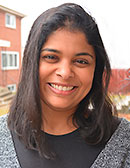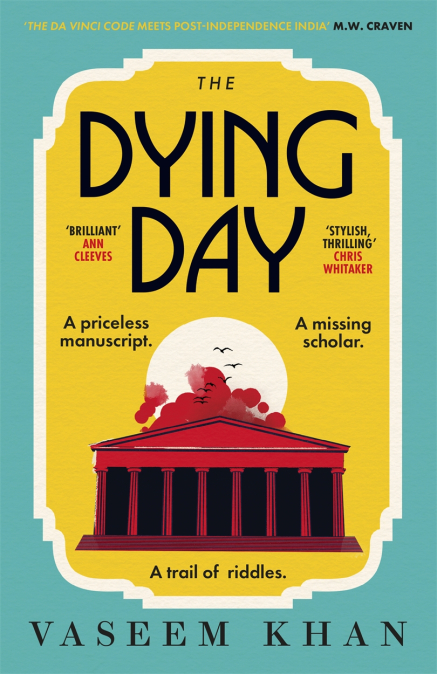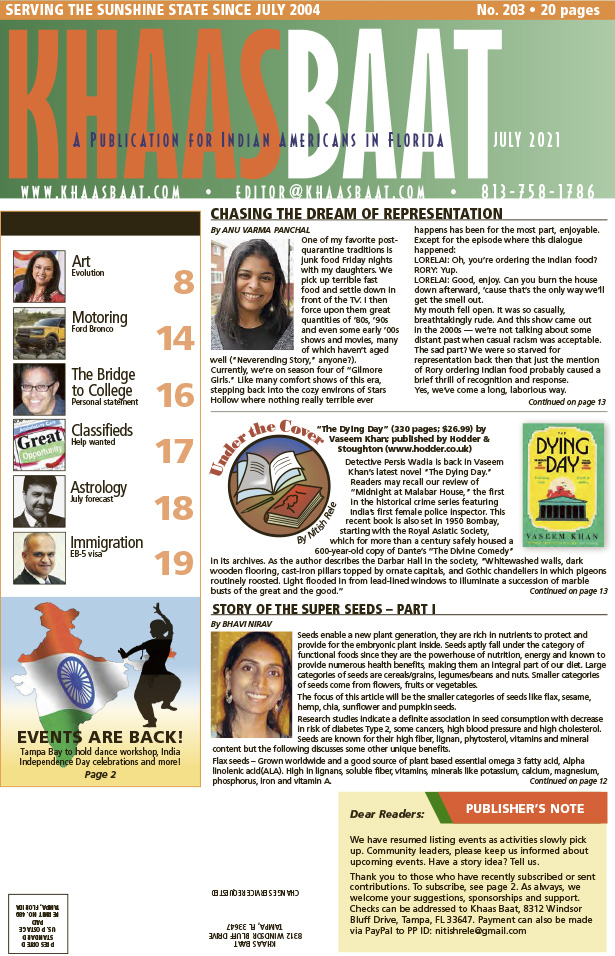
TO SEE THE JULY ISSUE IN ITS ENTIRETY, CLICK BELOW:
FAMILY MATTERS
Chasing the Dream of Representation

One of my favorite post-quarantine traditions is junk food Friday nights with my daughters. We pick up terrible fast food and settle down in front of the TV. I then force upon them great quantities of ’80s, ’90s and even some early ’00s shows and movies, many of which haven’t aged well (“Neverending Story,” anyone?).
Currently, we’re on season four of “Gilmore Girls.” Like many comfort shows of this era, stepping back into the cozy environs of Stars Hollow where nothing really terrible ever happens has been for the most part, enjoyable. Except for the episode where this dialogue happened:
LORELAI: Oh, you’re ordering the Indian food?
RORY: Yup.
LORELAI: Good, enjoy. Can you burn the house down afterward, ‘cause that’s the only way we’ll get the smell out.
My mouth fell open. It was so casually, breathtakingly rude. And this show came out in the 2000s — we’re not talking about some distant past when casual racism was acceptable.
The sad part? We were so starved for representation back then that just the mention of Rory ordering Indian food probably caused a brief thrill of recognition and response.
Yes, we’ve come a long, laborious way. We went from a brown face Peter Sellers in “The Party,” to Amrish Puri eating monkey brains in the “Temple of Doom,” to heavily accented convenience store clerk Apu on “The Simpsons” (for which Hank Azaria publicly apologized this year). Things got better, and people like Mira Nair made movies like “The Namesake.” We were still only telling purely Indian stories, but at least they were integrated into the American landscape in which we lived.
And now? We have Hasan Minhaj filling seats around the country with his “The King’s Jester” tour this fall. Aziz Ansari’s “Master of None” won critical acclaim and several industry awards. Maitreyi Ramakrishnan broke barriers by starring in Mindy Kaling’s Netflix series “Never Have I Ever.” Disney Junior introduced “Mira Royal Detective,” a show I wish my girls would have had when they were little, with an all-South-Asian cast and creative crew and no ridiculous accents.
But while all this progress and control over the narrative is fantastic, it’s still not enough. True representation, as my frustrated 16-year-old vented to me, is more complex than just seeing brown people on screen. True representation will be when there doesn’t have to be “the Indian girl TV show.” True representation will be when we are just cast as interesting characters whose ethnicity is just one part of their story. It has started to happen (Jameela Jamil and Tiya Sircar in “A Good Place,” Irfan Khan in “Jurassic World,” or Manish Dayal in “The Resident”), but it will take a lot more work to undo and overcome years of stereotyping.
Who cares, you might ask. It’s just entertainment! But on-screen stereotyping is harmful because it reflects and reinforces what we as a society find to be acceptable. Take this seemingly innocuous incident that occurred in one of my younger daughter’s classes while e-learning this past year. During a conversation about mental health, the topic of yoga and meditation came up. Looking around the screen, the teacher called on a South Asian classmate (who was born and raised in America) to add insight to the discussion with expertise from “his country” – because of course, every brown kid surely meditates after breakfast before signing in for his first zoom class. It reminded me of a morning when I was volunteering at the media center at my daughters’ elementary school. The Internet went down, and another volunteer asked if I could fix it because, “Aren’t you guys good at that stuff?”
Being associated with yoga or computer proficiency aren’t bad things in themselves — I’m flattered anyone would associate me even erroneously with technological proficiency — but they are lazy stereotypes. And dismantling these notions onscreen is one way to allow for more authentic, diverse and realistic expressions of our identities, which will hopefully translate to real life as well. We owe it to ourselves and our children to demand better, whether it’s from the screen … or the audience.
Anu Varma Panchal is a mother of two and owner of www.YourEditingSolutions.com

“The Dying Day” (330 pages; $26.99) by Vaseem Khan; published by Hodder & Stoughton (www.hodder.co.uk)
 Detective Persis Wadia is back in Vaseem Khan’s latest novel “The Dying Day.” Readers may recall our review of “Midnight at Malabar House,” the first in the historical crime series featuring India’s first female police inspector. This recent book is also set in 1950 Bombay, starting with the Royal Asiatic Society, which for more than a century safely housed a 600-year-old copy of Dante’s “The Divine Comedy” in its archives. As the author describes the Darbar Hall in the society, “Whitewashed walls, dark wooden flooring, cast-iron pillars topped by ornate capitals, and Gothic chandeliers in which pigeons routinely roosted. Light flooded in from lead-lined windows to illuminate a succession of marble busts of the great and the good.” But when the priceless book vanishes along with the man charged with its care, British scholar and war hero John Healy, the case lands on Inspector Wadia’s desk. Paired with Scotland Yard criminalist Archie Blackfinch, sub-inspector George Fernandes and others, she sets out to solve the case of the missing artifact, which slowly becomes a murder mystery (Nazis, freemasons and more) as the deaths pile up. Evidently, she has a soft corner and liking for Blackfinch. “His smooth cheeks gleamed in the overhead lighting, and his thatch of dark hair had been Brylcreemed back, giving him the neatness of an otter. He looked at her through black-framed spectacles, his green eyes crinkling with good humour.” Other interesting characters rounding out the story are the inspector’s wheelchair-bound father Sam, who owns a bookshop, his old friend Dr. Shaukat Aziz, and Auntie Nessie who desperately wants her niece to tie the knot. Truly, the Bombay of the 1950s, now Mumbai, comes back to life as in: “… a seven-storey art deco building on Marine Drive, overlooking the Back Bay. The mid-morning sun made prisms on the water as boats bobbed on the chop. Beneath her feet, traffic moved along the road; a steady stream of pedestrians wandered along the curving promenade beside it.” Like the first in the Malabar House series, “The Dying Day” is serious stuff involving codes, riddles and puzzles. But you will be hooked onto it like us as we await the next in the Persis Wadia crime series.
Detective Persis Wadia is back in Vaseem Khan’s latest novel “The Dying Day.” Readers may recall our review of “Midnight at Malabar House,” the first in the historical crime series featuring India’s first female police inspector. This recent book is also set in 1950 Bombay, starting with the Royal Asiatic Society, which for more than a century safely housed a 600-year-old copy of Dante’s “The Divine Comedy” in its archives. As the author describes the Darbar Hall in the society, “Whitewashed walls, dark wooden flooring, cast-iron pillars topped by ornate capitals, and Gothic chandeliers in which pigeons routinely roosted. Light flooded in from lead-lined windows to illuminate a succession of marble busts of the great and the good.” But when the priceless book vanishes along with the man charged with its care, British scholar and war hero John Healy, the case lands on Inspector Wadia’s desk. Paired with Scotland Yard criminalist Archie Blackfinch, sub-inspector George Fernandes and others, she sets out to solve the case of the missing artifact, which slowly becomes a murder mystery (Nazis, freemasons and more) as the deaths pile up. Evidently, she has a soft corner and liking for Blackfinch. “His smooth cheeks gleamed in the overhead lighting, and his thatch of dark hair had been Brylcreemed back, giving him the neatness of an otter. He looked at her through black-framed spectacles, his green eyes crinkling with good humour.” Other interesting characters rounding out the story are the inspector’s wheelchair-bound father Sam, who owns a bookshop, his old friend Dr. Shaukat Aziz, and Auntie Nessie who desperately wants her niece to tie the knot. Truly, the Bombay of the 1950s, now Mumbai, comes back to life as in: “… a seven-storey art deco building on Marine Drive, overlooking the Back Bay. The mid-morning sun made prisms on the water as boats bobbed on the chop. Beneath her feet, traffic moved along the road; a steady stream of pedestrians wandered along the curving promenade beside it.” Like the first in the Malabar House series, “The Dying Day” is serious stuff involving codes, riddles and puzzles. But you will be hooked onto it like us as we await the next in the Persis Wadia crime series.
NUTRITION
Story of the Super Seeds – part I

Seeds enable a new plant generation, they are rich in nutrients to protect and provide for the embryonic plant inside. Seeds aptly fall under the category of functional foods since they are the powerhouse of nutrition, energy and known to provide numerous health benefits, making them an integral part of our diet. Large categories of seeds are cereals/grains, legumes/beans and nuts. Smaller categories of seeds come from flowers, fruits or vegetables.
The focus of this article will be the smaller categories of seeds like flax, sesame, hemp, chia, sunflower and pumpkin seeds.
Research studies indicate a definite association in seed consumption with decrease in risk of diabetes Type 2, some cancers, high blood pressure and high cholesterol. Seeds are known for their high fiber, lignan, phytosterol, vitamins and mineral content but the following discusses some other unique benefits.
Flax seeds – Grown worldwide and a good source of plant based essential omega 3 fatty acid, Alpha linolenic acid(ALA). High in lignans, soluble fiber, vitamins, minerals like potassium, calcium, magnesium, phosphorus, iron and vitamin A. Omega 3 fatty acids in flaxseeds contribute to reducing inflammatory mediators. Soluble fiber in flax seeds helps in treating digestive disorders like constipation, irritable bowel syndrome and diverticular disease.
According to a study on 29 Type 2 diabetic patients, supplemented with 10 g of flax seed powder for a period of one month, fasting blood glucose was reduced by 19.7% and glycated hemoglobin (HbA1c) by 15.6%. A favorable reduction in total cholesterol (14.3%), triglycerides (17.5%), ldl cholesterol (21.8%) was also observed.
Flaxseeds should be eaten ground since whole seeds pass through the intestine undigested. Ground flax seeds are oily and slimy. They are excellent as egg substitutes in baking or for thickening broths, gravy or sauces. They are great to add to flours, oatmeal, shakes, smoothies and milk before bed.
Sesame seeds – Primarily an oil seed crop, they are grown in Asia and east Africa. Part of a wide variety of cultures Asian, Mediterranean, South American, Mexican, because of their amazing health benefits. They are rich in fiber, phytosterols, protein, many vitamins, minerals and antioxidants such as copper, manganese and magnesium. Sesame seeds are one of the most prevalent sources of lignans in the diet, being rich in lignans such as sesamin and sesamol. Sesamol is a phenolic compound in sesame seeds, having anti-cancer, antioxidant and anti-inflammatory properties.
As per the ancient science of Ayurveda: sesame is a blood builder, it preserves body heat, and strengthens bones, muscles and even willpower. Consumption of sesame seeds moisturizes skin, hair, strengthens liver and eyes. Due to the health benefits it offers, the effect of sesame seed and its oil have been studied on human health. According to one study conducted on 50 participants with osteoarthritis of the knee, 40 gm daily supplementation of sesame seeds for two months significantly lowered serum total cholesterol, LDL-cholesterol and malondialdehyde MDA (biomarker of oxidative stress) (P<0.05), while no significant difference in serum values of lipid profile and oxidative stress parameters was seen in the control group (P>0.05).
A review (eight controlled trials, 843 participants) published in Journal of the Science of Food and Agriculture, 2017, concluded that sesame consumption can reduce systolic BP (-7.83 mmHg) and diastolic BP (-5.83 mmHg).
Sesame can be eaten raw, roasted or ground. Roasted golden or black sesame are used to make ladoos, chikki (brittle), mouth fresheners, tahini, zatar seasoning, toppings on sushi, pad thai, etc. Sesame oil is used in Asian cooking to impart distinct aroma and flavor.
Recipe of the month:
- Tahini yogurt dip
- Sesame seeds 3 tbsp
- Yogurt 1 cup
- Mustard - 1 tsp
- Maple syrup - 1 tsp
- Salt to taste
- Lime juice ½ tsp depending on sourness of yogurt
- Garlic - 2 big cloves
Roast golden sesame seeds, cool and grind in a coffee grinder.
In a chopper pulse yogurt, salt, little mustard, garlic, lime juice and maple syrup, until all ingredients are mixed well.
Mix in sesame powder to the yogurt and pulse one or two times.
Enjoy this healthy refreshing dip with wraps, sandwiches, burger, pita bread/chips.
To our health!
To be continued …
Bhavi Nirav is a certified Iyengar yoga teacher, Registered Dietitian/M.S., R.D., L.D., and can be reached at [email protected]
ADVERTISEMENTS







